If you want to learn a lot about yourself, try training another animal.
I’ve skated through life without having to do a lot of animal training — even as someone who studies animals! I grew up with untrained cats; the research lab I worked in as an undergraduate used key-pecking in pigeons to study their behavior (something pigeons basically learn on their own through a process called autoshaping); I currently study food-storing in squirrels — something they are experts at. I like studying what animals do naturally — and now I think I know why.
Pigeons being autoshaped to peck a key in an operant chamber.
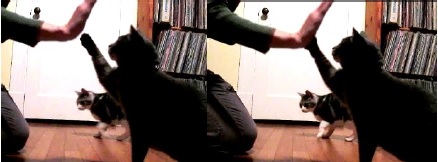
I have trained my cats to do cute parlor tricks – high-five, sit, and the like. But, most of the important stuff that my cats know, they have figured out on their own, such as using the litterbox (no help from me), and using their scratching post (encouraged with positive reinforcement). But I’ll be honest, I don’t really LOVE training. I enjoy the parlor tricks, and I think my cats do too, but that’s a low stakes situation. Now I would like to train one of my cats to perform a new behavior – to go through a cat door into a magical box that will prevent my other cat from eating all of her food (more on the Meowspace in a future blog!).
As I have started desensitizing my cat to the Meowspace and begun shaping her to use it, it has been surprising to me how I have responded to the training process. I’ve read a lot about training methods; I’ve studied learning theory; I train my clients to train their cats. But I was a bit underprepared for what it actually feels like to train an animal when the training doesn’t happen as easily as the lazy trainer within me had hoped it would.
Just a few of my thoughts and observations as I have been going through this process:
Complete lack of patience “Wow, it’s been five days and I can’t believe she hasn’t learned this yet!” Why do five days feel like eternity? And why am I in such a hurry?
Lack of confidence in myself Various thoughts come to mind, such as “I must be a really crappy trainer if she hasn’t figured this out already!,” and “I must be doing this all wrong.” I’m surprised I haven’t withdrawn from graduate school yet.
Bad training technique Well, maybe I am doing some things wrong. Instead of shaping behaviors in small increments, I’m trying to take huge leaps. Instead of approaching training systematically, I’m trying a kitchen sink of several different things in random order, in the hopes that something will “click.”
Drift toward force I am ashamed to say that I have to fight the temptation to just shove my cat through the cat door!!! As someone who spends much of my time advising others on how to use positive reinforcement, and who feels nothing but love, gentleness and squee toward my cats, I can’t believe how strong the urge is to use coercive methods.
Unrealistic expectations of my cat: In the back of my mind hides the thought that my cat should just be able to figure this out on her own. I have actually said OUT LOUD “Hmmm. I guess she’s not as smart as I thought,” and “Thousands of other cats figure out how to use cat doors, why can’t she?” What kind of horrible cat parent am I???
Surprisingly, there has been little written on how it feels to train animals. So I’m drawing on some familiar resources (such as “Don’t Shoot the Dog” by Karen Pryor, an amazing book on training and changing behavior without force) and seeking out some new sources as well (“The Other End of the Leash” by Patricia McConnell, so far the only published information I can find on the human side of the animal-training process).
Obviously, I need to take a step back and stop freaking out. My plan: take a deep breath, take off my lazy human sweater and put my trainer hat back on. With any training situation, it’s good to think about:
What is motivating to my trainee? For my cat, it might be more than just her regular food. It might mean extra special treats, petting, or a special toy.
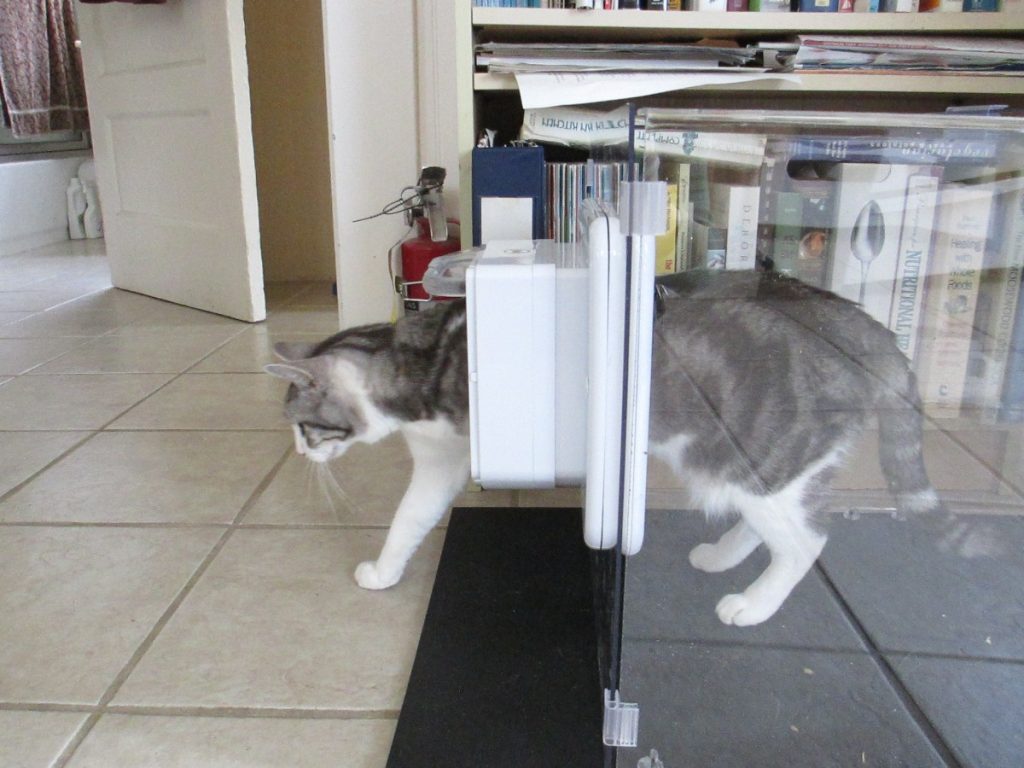
How can I break the training into small steps? Shaping often happens in bits, not chunks. Scaffolding the learning process and raising criteria in smaller steps will be more effective than trying to get from zero to sixty with nothing in between.
How can I communicate clearly to my cat? First of all, I need to approach the training systematically, so that I’m not confusing my cat about what I want. I can also use other tools, such as a secondary reinforcer (e.g. a clicker) to let her know what behaviors I am rewarding.
How can I make this fun for both of us? I obviously need an attitude adjustment. If she doesn’t learn this right away, it is okay. There’s no rush. But training should be fun for both us, and can be a bonding experience.
Practice makes purrfect! And following that, if training is fun, we’ll want to have more sessions each day. Repetition is good.
So, in training my cat, I am also training myself: to be a more patient, systematic and effective trainer. It is a hard lesson to learn, but I hope it will be one that will stick with me for life.
I will be reporting more on our Meowspace adventures and progress in future blog posts!
References and Resources
Friedman, I. A. (2000). Burnout in teachers: Shattered dreams of impeccable professional performance. Journal of Clinical Psychology, 56(5), 595-606.
McConnell, P. B. (2002). The Other End of the Leash: Why We Do What We Do Around Dogs. Random House Digital, Inc.
Pryor, K. (1985). Don’t shoot the dog. Bantam.
Sidman, M. (1989). Coercion and its fallout. Boston: Authors Cooperative.
Thomaz, A. L., & Breazeal, C. (2006, July). Reinforcement learning with human teachers: Evidence of feedback and guidance with implications for learning performance. In AAAI (Vol. 8, No. 1, pp. 8-6).

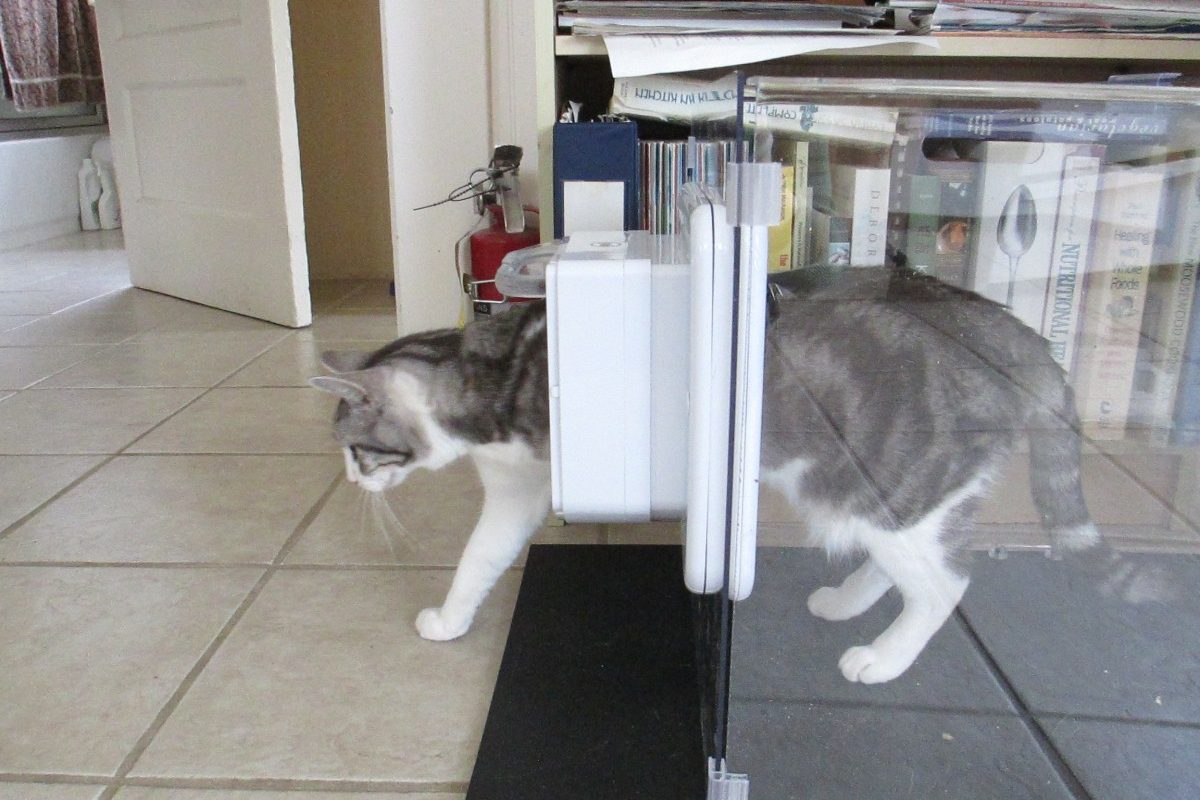

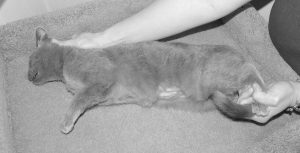
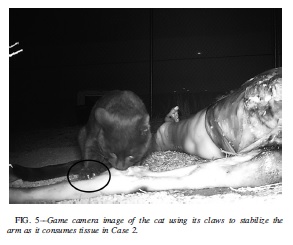
Wow! I will be sharing this with clients. Great perspective! Your honesty about the frustration is something that others in your shoes, but without your level of experience will appreciate. Are you using a timer to set & track criteria shifts?
Kelly, thanks! And I’m not using a timer…I probably should be…
Great write up about the frustrations most of us face when trying to communicate with anyone, not just another species. Just because it is obvious to us, the other individual (human or otherwise) often has no idea what the heck we want!
Excellent point, Jacqueline!
I just remembered something when I was reading your post…
One of our cats had a mental block about coming out of the MeowSpace. She would sit inside and stare out the door, awaiting for it to magically open. I kept showing her that the door opened, and she would head out. But to leave it to her to do herself didn’t work.
One day I was eating some popcorn and a piece fell just outside the door. Out she came, enticed by the popcorn. A couple more times and she got it.
I just remembered something when I was reading your post…
One of our cats had a mental block about coming out of the MeowSpace. She would sit inside and stare out the door, awaiting for it to magically open. I kept showing her that the door opened, and she would head out. But to leave it to her to do herself didn’t work.
One day I was eating some popcorn and a piece fell just outside the door. Out she came, enticed by the popcorn. A couple more times and she got it.
Motivation is the key 🙂 I might chase some popcorn too!
This is my first experience with cats. (3). Although I am 85 I have always had dogs since I was a child. My wife insisted that we help out these stray kittens and one of its mothers. She and her daughter have completely overhauled our living space to make the cats happy and drive me nuts. I might add that I have tested to moderate allergy to cats. Dogs and cats seem to be complete opposites to the sides of a coin. That said, I love all animals to a lesser or greater degree. Any kindly attempt to train even you to come in after it has devised sneaky way to escape has been useless so far. Anyone have symptoms for my plight? I’ll keep patiently trying!